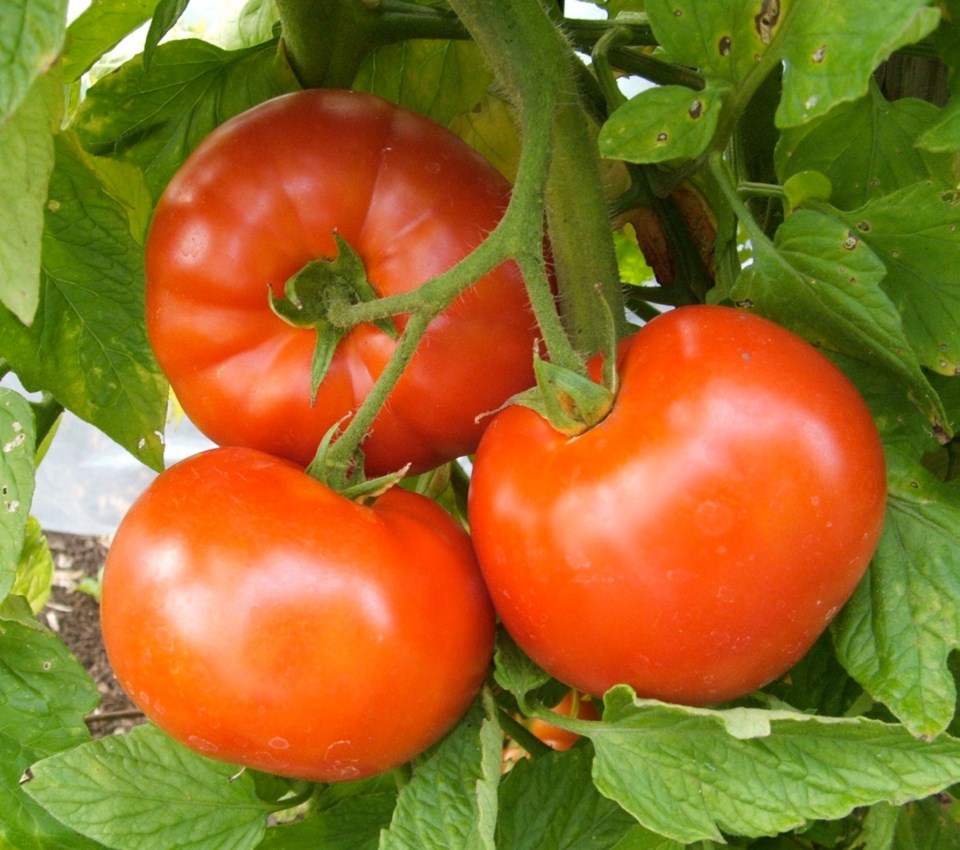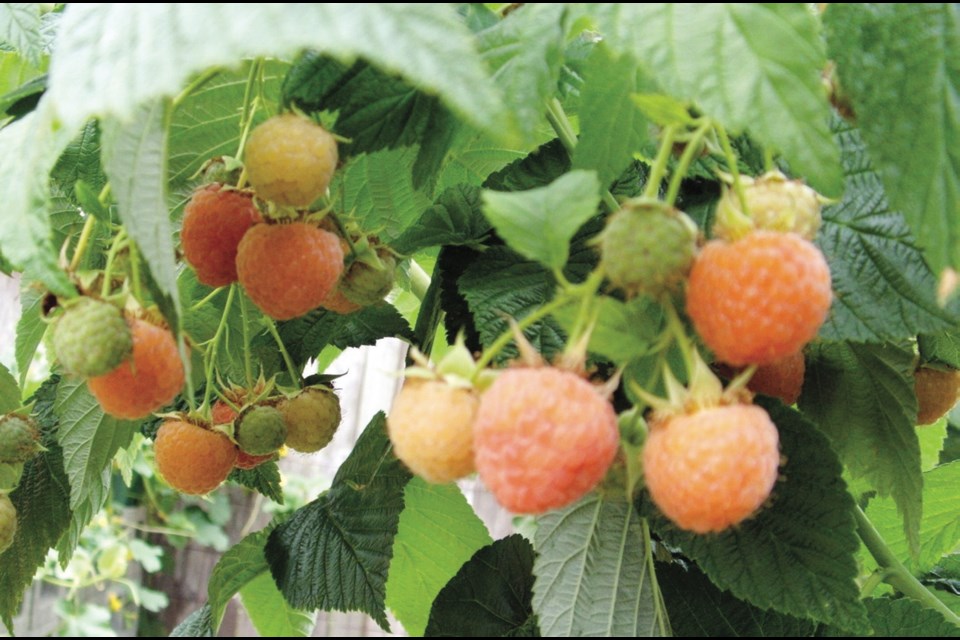Dear Helen: I continue to be confused over summer-bearing and everbearing raspberries. What are the differences between them? Are they managed the same way?
L.O.
The two have different growth patterns. Summer bearing varieties like Meeker and Tulameen yield fruit on canes produced in the previous year. When a new cane appears, it grows and bears only leaves that first summer. Then it drops its leaves for the winter and grows new leaves in the spring, along with flowers that develop into summer berries.
Once the fruiting period is over, the canes that produced berries have completed their life cycle and are cut down to the ground, leaving the new canes that emerged in the spring to develop. If the new canes have grown in thickly, they should be thinned to leave an uncrowded planting of the strongest canes, which will yield berries in the following year.
“Everbearing” raspberries like Autumn Bliss and Fall Gold do not actually produce berries all summer. They are sometimes called “fall bearing” because their more significant harvest comes in late summer and early autumn, at the top portions of canes produced in the same year. In the following summer, these same canes bear more berries, but lower down along their length.
Once the canes have produced that second, summer crop, they have completed their life cycle and are removed. Meanwhile, newly produced canes will give a late summer and autumn crop on the cane tops.
There are choices in the management of “everbearing” raspberries. Some people choose the simple path of growing them as single-season canes, going for the late crop only. That involves simply cutting all the canes down to the ground in late fall or early winter. Canes emerging the following spring will give the late crop.
There are advantages to growing the canes for a single, late crop only. The simplicity of management is one. Another is that the yield tends to be especially abundant because all the plants’ energies go into producing just one annual set of canes.
For a long time I cut all the canes down for the winter and grew everbearing raspberries for the one late crop; however, in recent years I’ve gone back to managing them for the two crops. The main reason is that rainy weather in early fall too often turned the berries mouldy. So here’s what I do.
As soon as the late crop is over (or too many of the berries are going mouldy, depending on the weather), I cut off the top portions of canes that have borne berries. The following early to mid-summer, I get a nice crop of berries off the same canes, and then cut them down. At the same time I thin out the new canes to ensure each of the heftiest ones have plenty of space to develop strongly for the late crop.

Dear Helen: I recently heard tomatoes described as “lime lovers,” but I’ve also read that they need an acidic soil. Which is right?
P.B.
Both statements can be considered true, in our climate.
Tomatoes thrive in a fertile, humus-rich but well drained soil with a slightly acidic pH — the same as for most vegetables. An ideal pH for tomatoes is around 6.5.
On a pH scale of 1 to 14, 7 indicates a neutral soil. Lower numbers indicate degrees of acidity. Numbers over 7 reflect alkaline soil conditions.
That tomatoes do best at a pH around 6.5 does denote a preference for slight acidity in the soil, but our coastal soils tend to become more acidic than that because winter rains leach out alkaline elements such as calcium and magnesium. Most of our soils require applications of lime to bring them into the just slightly acidic realm. That puts them also into the “lime lover” category.
GARDEN EVENTS
Dahlia meeting. The Victoria Dahlia Society will meet on Thursday at 7:30 p.m. in the Victorian at McKenzie, 4000 Douglas St. The evening’s program will be Dahlias 101, a power point presentation covering all aspects of growing dahlias. Visitors are welcome.
Nanaimo meeting. The Nanaimo Horticultural Society will meet on Saturday at 1 p.m. in First Unitarian Fellowship Hall, 595 Townsite Rd. Kathy Claxton will present Keep Calm, Plant On and El Martel will discuss chafer beetles in lawns. Information at 250-758-6783.
Seedy on Salt Spring. Island Natural Growers will present Salt Spring Island’s Annual Seedy Saturday, 10 a.m. to 3 p.m. in the Farmer’s Institute, 351 Rainbow Rd. There will be vendors, food, a seed exchange, and children’s activities.



